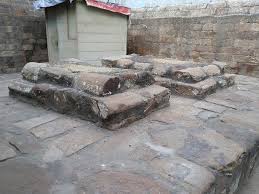Stories
The Legend of ‘Sultan Razia’

Not many know the full story surrounding the Asia’s first female monarch. Travelling in Old Delhi and entering from Turkman Gate and to the narrow lanes of Pahari Bhojla till Bulbuli Khana, a stone plaque put up by the Archaeological Survey of India can be seen. It is the grave of Sultan Razia.
Razia was the daughter of the Delhi Sultan, Iltutmish, and his favourite Begum Terken Khatun. When Razia’s brother Nasiruddin Mahmud (Sultan Iltutmish’s eldest son and successor to the throne) had died wjile fighting the Mongols, the Sultan declared his daughter as his heir. According to the famous historian Minhaj-us-Siraj, the Sultan thought of Razia’s abilities equivalent to 20 of his sons’.
From childhood, the Sultan and his trusted slave Malik Yaqut, had trained Razia in the art of warfare, horsemanship, administration, and diplomacy. However, after Sultan’s death, the powerful Turkish nobles ignored his will and placed Ruknuddin Firoz, another son of the Sultan, on the the throne. He was a debauch, and very soon after his coronation the people of Delhi were in despair.
Razia dressed herself in the red clothes of a plaintiff and appealed for justice in the congregation that had gathered for Friday prayers in the Quwwat-ul-Islam mosque. The people put their faith in her and she was elevated to the throne as Delhi’s fifth Sultan. Ruknuddin was soon after imprisoned and later executed.
Razia refused to call herself Razia Sultan because the word Sultan was used as a suffix for consorts and princesses. Razia had coins struck in her name. And later she adopted the title of Nusrat Amir-ul-Mu’minin which means ‘helper of commander of faithful, that is, Caliph’. Sultan Razia herself appointed Malik Yaqut as Amir-e-Akhur which means commander of the horses. Ibn Battuta had written that there were suspicions of intimacy between Sultan Razia and Malik Yaqut. Sultan Razia ruled wisely for four years from 1236 to 1240.
Soon after, Malik Altunia, the governor of Tabarhind (now Bhatinda), rose against her and she went to battle against him. All the Turkish nobles in her army mutinied, Malik Yaqut was killed, and Sultan Razia was captured.
The rebellious nobles placed her brother Bahram Shah on the throne of Delhi in April, 1240. Altunia, who was disappointed at being deprived of any reward for his part in the rebellion, offered his hand in marriage to Razia, which she accepted. However her legend came to an end when Razia and Altunia’s army attacked Bahram Shah in Sept-Oct 1240, their combined army was defeated and Sultan Razia was killed.





























